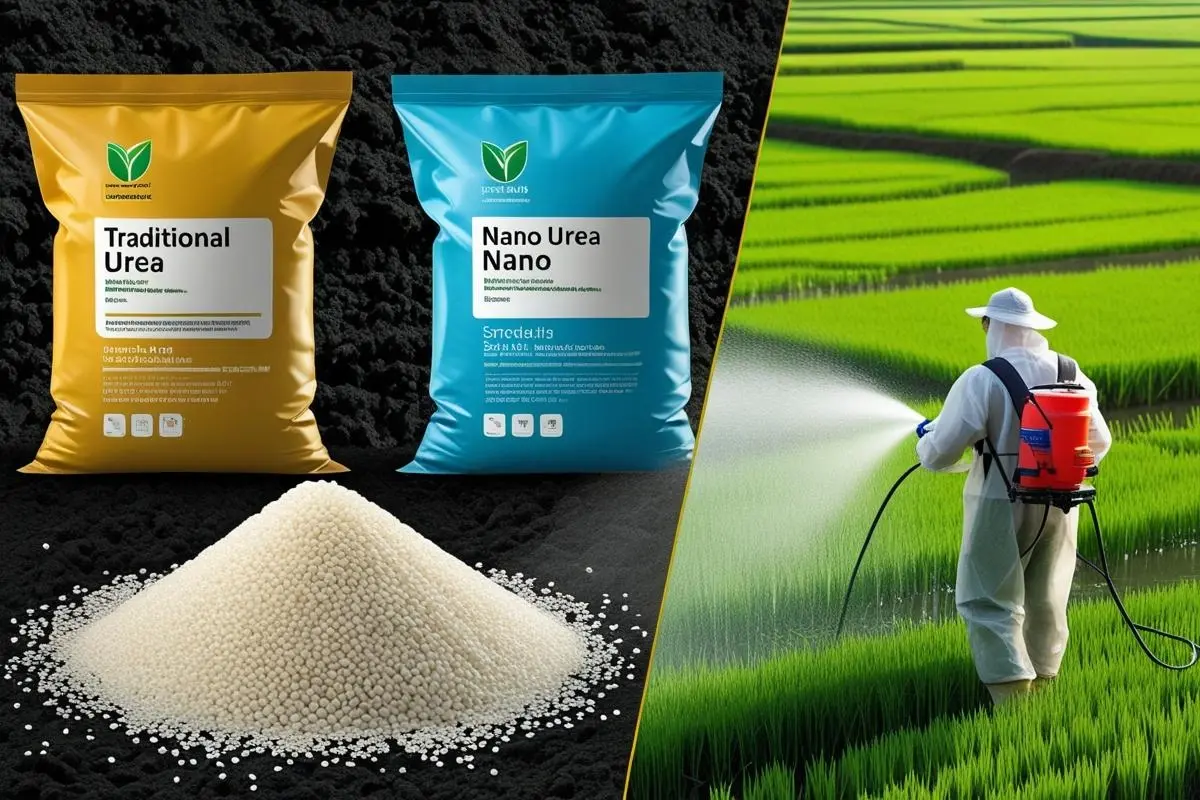Fertilizers are crucial in today’s farming, aiding farmers in restoring soil nutrients, enhancing crop growth, and boosting yields. Yet, studies from agricultural universities and field research worldwide consistently indicate that poor fertilizer practices are a major factor in decreased productivity and soil degradation. Even with access to good fertilizers, many farmers face challenges like nutrient imbalance, wrong timing, and incorrect application methods—problems that can hinder crop performance for years.
In this article, we take a detailed look at the top mistakes farmers make while using fertilizers, backed by scientific research and real-world observations. Understanding these errors is essential not just for boosting crop yields but also for maintaining soil health over time, using resources wisely, and promoting sustainable farming practices.
Table of Contents
Top Mistakes Farmers Make While Using Fertilizers and How to Avoid Them

1. Applying Fertilizers Without Soil Testing
A lot of farmers rely on guesswork or old-school methods for fertilizers rather than figuring out what their soil really needs. This can cause nutrient imbalances—too much nitrogen or phosphorus while other nutrients are lacking. Consequently, crops don’t grow evenly, soil fertility drops, and money spent on fertilizers goes to waste since the application doesn’t align with the actual state of the soil.
How to Avoid It
Farmers should conduct a soil test every 2–3 years to assess nutrient levels, pH, and organic matter. With this information, they can determine the right type and amount of fertilizers to use. Utilizing government soil testing labs or private services aids in developing a balanced nutrient strategy that enhances both productivity and soil health.
2. Overusing Nitrogen Fertilizers Like Urea
Nitrogen fertilizers, particularly urea, are often used excessively due to their rapid greening effects. But too much nitrogen can weaken root strength, make plants more susceptible to diseases and pests, and even lead to lodging in crops such as rice or wheat. Additionally, overusing these fertilizers can decrease microbial activity, damage soil structure, and diminish the overall quality of the yield.
How to Avoid It
Nitrogen is best applied in smaller, split doses instead of one big application. Farmers ought to stick to the suggested NPK ratios and mix nitrogen with organic materials like compost or neem-coated urea to help reduce nutrient loss. It’s crucial to apply nutrients in a balanced way for the long-term health of both soil and crops.
3. Using the Same Fertilizer Combination Every Year
Using just regular fertilizers such as urea and DAP year after year can cause nutrient imbalances. Eventually, soils start lacking in secondary nutrients like sulfur, magnesium, and calcium, as well as micronutrients like zinc and boron. These shortages can slowly decrease yields, even if farmers keep applying fertilizers consistently.
How to Avoid It
Farmers ought to switch up their fertilizer types and add micronutrients according to what their crops and soil require. Using multi-nutrient fertilizers, mixes of micronutrients, or tailored blends ensures that all the vital nutrients are restored. Sticking to crop-specific guidelines helps maintain a balanced and productive soil.
4. Applying Fertilizers at the Wrong Time
Timing errors, like putting down nitrogen while the plants are flowering or fertilizing right before a big rain, end up wasting nutrients and cash. If you apply fertilizers too soon, they might get washed away, and if you do it too late, the crops won’t get the benefits. Poor timing can also cause uneven growth and lower the quality of your harvest.
How to Avoid It
Basal fertilizers need to be applied when planting, and nitrogen should be given in 2–3 split doses based on the type of crop. Farmers should steer clear of fertilizing right before expected rain and should instead apply nutrients when the crop can take them in effectively. Keeping track of crop growth stages helps ensure the best nutrient efficiency.
5. Not Using Organic Matter Alongside Chemical Fertilizers
A lot of farmers rely only on chemical fertilizers, which slowly decrease the organic carbon in the soil. Eventually, the soil gets hard, compacted, and less fertile. When there’s no organic matter, chemical fertilizers release nutrients too fast, causing losses and making it hard for plants to absorb nutrients.
How to Avoid It
Farmers ought to blend organic materials like compost, cow dung, vermicompost, or green manure with chemical fertilizers. Mixing in organic matter enhances soil structure, boosts water retention, and increases microbial activity. Using a combined nutrient management strategy guarantees a consistent release of nutrients and promotes long-term soil health.
6. Incorrect Placement of Fertilizers
Spreading fertilizers on the top of the soil or putting them too close to seeds can lower how well nutrients work. When you apply them on the surface, you risk losing some to evaporation or runoff, and if they’re too close to the seeds, it might lead to seed burn or uneven growth in crops.
How to Avoid It
Fertilizers need to be positioned about 3–5 cm from the seed and a bit deeper in the soil for optimal root absorption. Techniques like band placement, side-dressing, or fertigation systems are great for getting nutrients right to the root zone. Correct placement not only reduces waste but also boosts fertilizer efficiency.
7. Ignoring Soil pH
Even if farmers apply the right fertilizers, crops might struggle to take in the nutrients if the soil pH is either too acidic or too alkaline. When the pH is off, it locks up nutrients in the soil, preventing plants from accessing them. This can result in poor growth and nutrient shortages, even with consistent fertilizer use.
How to Avoid It
Farmers need to test the soil pH when doing soil tests and should apply lime for acidic soils or gypsum for alkaline ones. Incorporating organic matter can also aid in stabilizing pH levels. Keeping the right pH is crucial for fertilizers to dissolve and be accessible to the crops.
8. Using Low-Quality or Fake Fertilizers
Many farmers end up purchasing fertilizers that are either mixed with harmful substances or of low quality, which have fewer nutrients than what’s claimed. This can lead to weak plant growth, lower harvests, and might even pollute the soil. Often, farmers make choices based on price, which can lead them to pick products that aren’t trustworthy.
How to Avoid It
Farmers ought to buy fertilizers exclusively from authorized dealers and verify batch numbers, labels, and certification marks. Comparing products from reliable brands and steering clear of suspiciously cheap fertilizers can help avoid quality problems. Putting money into authentic fertilizers guarantees steady results and safeguards soil health.
9. Improper Irrigation After Fertilizer Application
Using fertilizers without adequate watering can hinder nutrient uptake. When fertilizers sit on dry ground, they risk burning the roots, and if applied just before a heavy rain, the nutrients can get washed away. Bad watering habits can make fertilizers less efficient and lead to more waste.
How to Avoid It
After applying fertilizer, light irrigation is great for breaking down nutrients and getting them to the plant roots. Drip irrigation works really well since it sends nutrients straight to the root zone. Farmers need to steer clear of applying fertilizers right before heavy rain and should tweak their irrigation schedule for improved nutrient absorption.
10. Ignoring Crop-Specific Nutrient Requirements
Different crops require different nutrients—what’s good for paddy might not be suitable for veggies, fruits, or pulses. Sticking to the same fertilizer plan for every crop can stunt growth, lower quality, and stop crops from achieving their full yield potential.
How to Avoid It
Farmers ought to stick to the fertilizer guidelines tailored for each crop, as suggested by agricultural universities or extension services. For instance, bananas require a higher amount of potassium, pulses need extra phosphorus, and cauliflower has a demand for boron. By tweaking the types and quantities of fertilizers according to the specific crop, farmers can achieve improved yield and quality.
Conclusion
Using fertilizers the right way isn’t just about throwing in some nutrients—it’s about really getting to know the soil, the crops, and the timing for each application. A lot of the common blunders farmers make with fertilizers stem from old habits, wrong info, or not having enough technical help. However, with proper soil testing, balanced nutrient management, correct placement, and the right mix of organic and chemical inputs, farmers can boost their crop yields while keeping the soil healthy for the long haul. By steering clear of these typical mistakes and sticking to best practices, farmers can cut costs, ramp up productivity, and head towards a more sustainable and profitable farming approach.








